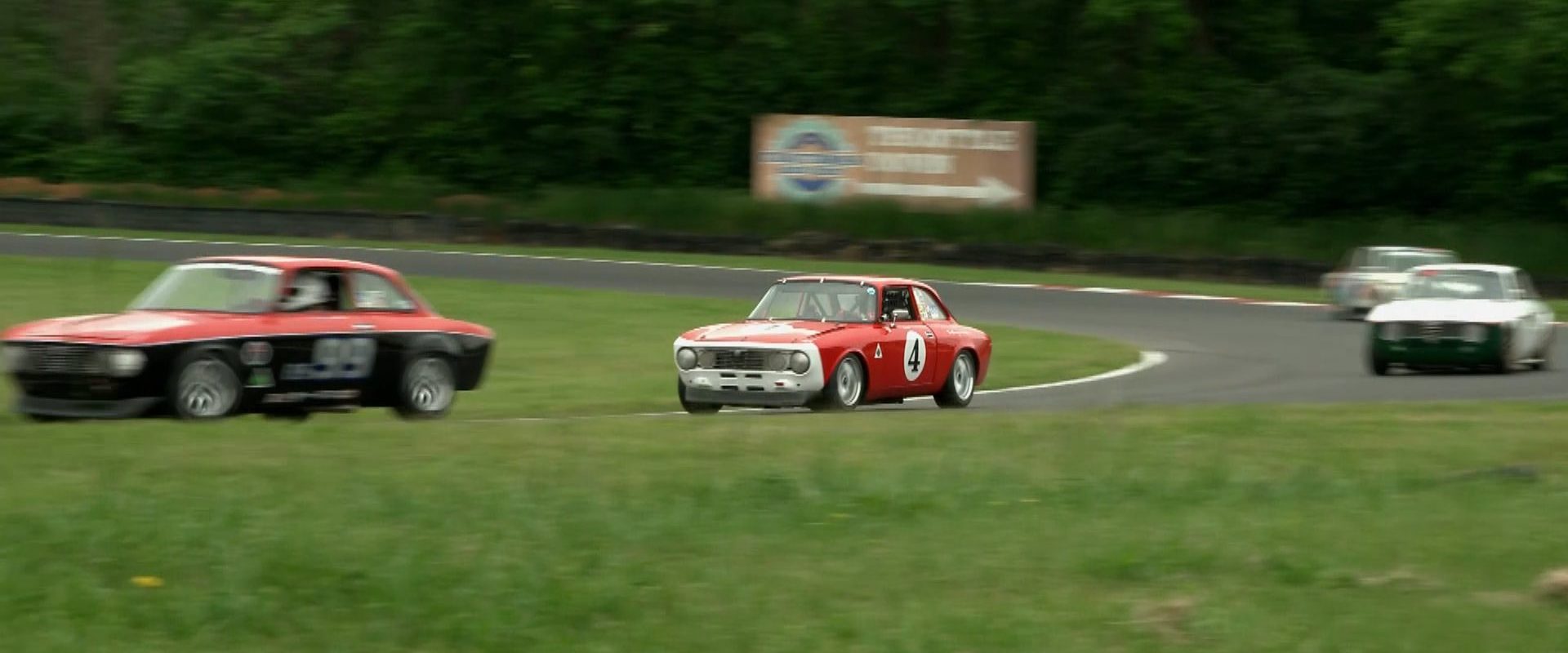Jefferson 500
The phrase “what’s old is new again” applies to a lot of things. Fashion, music, even car design. But when it comes to competitive motorsports, old is old. But that’s a good thing, since vintage race cars never go out of style. This week our Greg Carloss goes “Over the Edge” for a long-running grass roots race where old is still way cool.
GREG CARLOSS: Looking at photos of vintage race cars is fun. Seeing them at a car show? That’s cool. But watching them go wheel to wheel at a racetrack, now that’s more my speed.
I don’t care who you are. The roar of 40 vintage race cars blowing by at wide open throttle has to put a smile on your face. And here at Summit Point Motorsports Park, the Jefferson 500 has generated grins for three decades and now serves as the marquee event for the Vintage Racer Group.
JIM KARAMANIS: The Vintage Racer group is a group of vintage racing enthusiasts who has been putting on vintage race events for 20 years. So, we have about 250 vintage race drivers. We probably have upwards of 5 to 600 people here, which includes crew. We normally get a few thousand spectators at the event.

GREG HAAS: Well, this is a legacy event that has been here for quite a few years, and it really involves a lot of people having fun with old cars.
TOM COTTER: I am Tom Cotter. I live in Davidson, North Carolina. And my business card says Certified Car Geek.
GREG CARLOSS: You may recognize Tom as the host of Hagerty’s “Barn Find Hunter” YouTube series, so he knows an old car when he sees one. But at the Jefferson 500, “vintage” is the preferred nomenclature.
TOM COTTER: Vintage racing used to be sports cars that were 25 years old or older, and they could be prepared up to 1972 specs. There are cars here that are newer than 25 years; but still, the preparation should be of the period of that car.
So, you shouldn’t come in here with the most modern Brembo brakes and the stickiest tires or whatever.

GREG HAAS: What’s exciting about this is it’s a very interesting combination of competition and rolling museum. I can’t think of any other event where you can go through the paddock and you seem to spend most of the time looking at these jaw-droppingly beautiful cars
GREG CARLOSS: While the car spotting in the paddock is primo, it’s best to get out around the track and see these things in action. And with multiple classes racing from Friday to Sunday, there’s no shortage of it.
JIM KARAMANIS: So, we have a number of groups that are all fairly large. We have almost 40 to 45 cars in all seven groups. We have Formula Fords and Sports 2000s like you see behind me. We have BMW 2002s, Alfa Romeo GTVs, Chevrolet Camaros, Ford Mustangs. Lots of MGs, Triumphs and things of that nature.
GREG CARLOSS: Having driven this track in modern cars, I can’t help but wonder what it feels like to blast down this high-speed section known as “The Chute” in cars twice my age while being flanked by two others.
Obviously, vintage racing requires equal parts courage and cash, but getting involved may not be as difficult as you think.

JIM KARAMANIS: Essentially, you have to be healthy. So, you have to be able to obtain a medical. You have to be able to get through our racing school. But you can do that with your own race car if you like. But there are a lot of rental companies that come out here and they rent cars.
TOM COTTER: What do I like most about vintage racing? It’s the people. The cars are second. People are first, the cars are second, and the racing’s third. It’s clean racing. It’s door handle to door handle. It’s tight. It’s close racing. But you never touch another person. It’s just terrific.
GREG CARLOSS: While it may not have the speeds of the Daytona 500 or the history of the Indianapolis 500, the Jefferson 500 still offers plenty of both. It’s also a good reminder that vintage is always in style.






